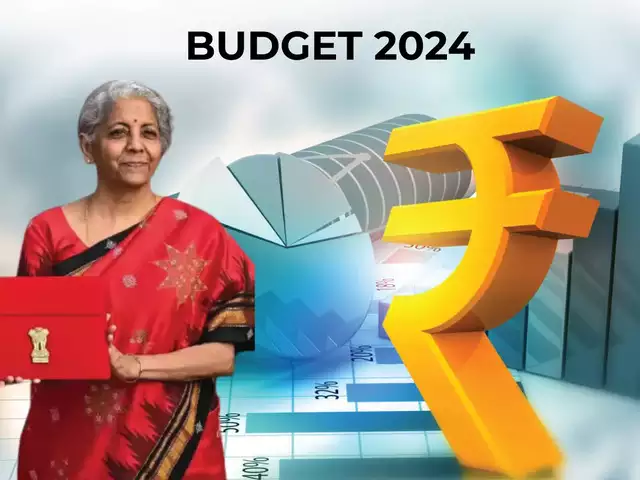Budget 2024: Detailed Analysis of Key Highlights and Announcements
Finance Minister Nirmala Sitharaman presented the Union Budget for the financial year 2024-2025, outlining a comprehensive range of fiscal policies, tax reforms, and sector-specific initiatives aimed at fostering economic growth and development. Here’s an in-depth look at the key highlights:
Tax Reforms and Policies
Buy-back of Shares:
One of the significant tax reforms proposed in Budget 2024 is related to the treatment of buy-back of shares by companies. Previously, the additional income-tax liability was on the company itself. The new proposal shifts this tax liability to the recipient investor, where income from buy-back of shares will be treated as dividend income. Moreover, the cost of such shares will be considered a capital loss to the investor, impacting their tax calculations.
Securities Transaction Tax (STT):
The Budget also includes revisions to the STT rates, affecting transactions in securities. The rate on the sale of options in securities is proposed to increase from 0.0625% to 0.1% of the option premium. Similarly, the STT on the sale of futures in securities will rise from 0.0125% to 0.02% of the traded futures price. These adjustments aim to streamline revenue generation from financial market transactions.
Income Tax for Foreign Companies:
In a move to attract more foreign investment, the income tax rate applicable to foreign companies (excluding those under special rates) has been reduced from 40% to 35%. This reduction aligns with the government’s efforts to make India a more competitive destination for foreign businesses.
Capital Gains Taxes:
Changes in capital gains tax rates were also announced. Short-term capital gains tax on specified financial assets has been increased to 20% from the previous 15%. Long-term capital gains tax on all financial and non-financial assets is proposed to be set at 12.5%. Additionally, the exemption limit for capital gains on certain listed financial assets has been raised from ₹1 lakh to ₹1.25 lakh per year.
Custom Duties:
Customs duties have been revised to stimulate specific sectors. Duties on gold, silver, and platinum have been reduced to 6% and 6.4%, respectively. Moreover, exemptions from customs duties have been extended to critical minerals like lithium, copper, and cobalt, essential for various industries including renewable energy and technology manufacturing.
New Income Tax Structure:
The new income tax regime introduces revised tax slabs, resulting in potential savings of up to ₹17,500 for taxpayers. The slabs are as follows:
- Income up to ₹3 lakh: Nil tax
- ₹3 lakh to ₹7 lakh: 5%
- ₹7 lakh to ₹10 lakh: 10%
- ₹10 lakh to ₹12 lakh: 15%
- Above ₹15 lakh: 30%
These revised slabs aim to provide relief to middle-income taxpayers while ensuring a more equitable distribution of the tax burden.
TDS and TCS Updates:
Several amendments have been made to the Tax Deducted at Source (TDS) and Tax Collected at Source (TCS) provisions. Notable changes include:
- TDS at 10% on payments exceeding ₹20,000 to partners by firms.
- Introduction of 1% TCS on notified luxury goods valued over ₹10 lakh.
- Reduction of TDS rate on e-commerce operators from 1% to 0.1%.
Sector-Specific Initiatives
International Financial Services Centre (IFSC):
To boost activities in IFSCs, the budget proposes tax exemptions for retail schemes and ETFs similar to those available to specified funds. Certain incomes of the Core Settlement Guarantee Fund established in IFSCs will also enjoy exemptions. Additionally, finance companies located in IFSCs will be exempted from the applicability of section 94B, which pertains to interest deduction limitation.
Micro, Small, and Medium Enterprises (MSMEs):
The budget introduces a new credit mechanism to facilitate continued bank credit to MSMEs during periods of financial stress. The limit for Mudra loans has been doubled from ₹10 lakh to ₹20 lakh. Furthermore, the threshold for mandatory onboarding of buyers on the TReDS platform has been reduced from ₹500 crore to ₹250 crore turnover.
Agriculture and Allied Sectors:
A substantial provision of ₹1.52 lakh crore has been allocated for the agriculture sector. This includes the establishment of 10,000 bio-research centres and initiatives to promote natural farming. The budget also emphasizes developing vegetable production clusters closer to consumption centres and supporting shrimp breeding centres for enhanced export through NABARD.
Industrial Development:
The government plans to develop 100 investment-ready industrial parks in or near cities to attract domestic and foreign investments. This initiative aims to bolster manufacturing capabilities and create employment opportunities across the country. Additionally, a Critical Mineral Mission has been proposed to boost domestic production, recycling, and overseas acquisition of critical mineral assets.
Economic Projections and Fiscal Policies
Fiscal Deficit and Capex:
For the fiscal year 2024-2025, the fiscal deficit is projected at 4.9% of GDP, down from 5.1% in the interim budget. The government aims to further reduce the deficit to below 4.5% in subsequent years. A total of ₹11.11 lakh crore has been allocated for capital expenditure (Capex), which amounts to 3.4% of GDP, focusing on infrastructure development.
Employment Schemes:
Three new employment-linked incentive schemes have been introduced to promote job creation and skill development:
- Scheme A targets first-time employees with a direct benefit transfer (DBT) equivalent to one month’s salary, up to ₹15,000.
- Scheme B incentivizes job creation in the manufacturing sector through EPFO contributions for both employers and employees over four years.
- Scheme C offers reimbursement to employers towards EPFO contributions for each additional employee, aimed at benefiting 2.1 lakh youths with salaries up to ₹1 lakh per month.
Social and Economic Priorities
The budget underscores the government’s commitment to enhancing productivity in agriculture, fostering employment and skill development, ensuring inclusive growth, promoting manufacturing and services, enhancing urban development, ensuring energy security, investing in infrastructure, promoting innovation and research, and undertaking next-generation reforms.
Conclusion
Budget 2024 reflects the government’s strategic approach to navigating global economic uncertainties while focusing on sustainable growth and development. By introducing comprehensive tax reforms, sector-specific initiatives, and prudent fiscal policies, the budget aims to stimulate economic activity, attract investments, and create employment opportunities across various sectors of the Indian economy.
Stay updated with the latest developments and impacts of Budget 2024 as policies unfold throughout the fiscal year, shaping India’s economic landscape for the future.







